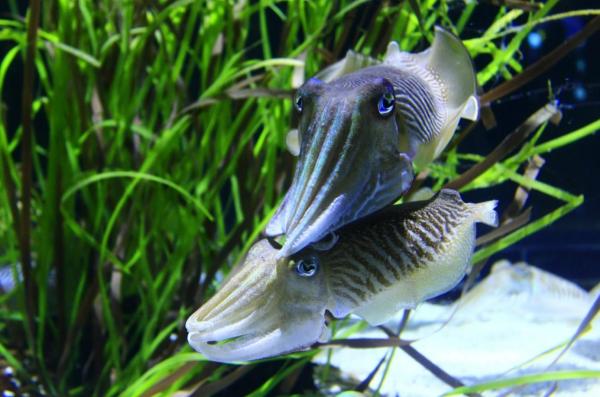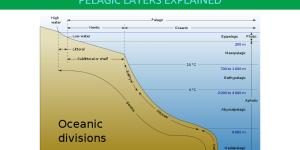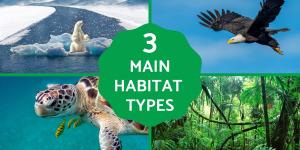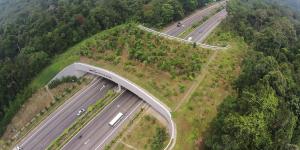What are Seagrass Beds or Seagrass Meadows?


Beneath the captivating surface of our oceans lies a world of astonishing beauty and ecological significance. Among the remarkable ecosystems that flourish in this aquatic realm, seagrass beds stand as a true testament to the wonders of nature. However, these lush underwater meadows often go unnoticed, despite their crucial role in supporting marine life, mitigating climate change, and maintaining the overall health of our oceans.
In this article, brought to you by thedailyECO, we will embark on an exploration of seagrass beds, shedding light on their definition, key features, their fauna, and ecological importance.
What are seagrass beds?
Seagrass beds are unique underwater ecosystems consisting of dense meadows of seagrasses. These meadows are formed by angiosperm plants that have adapted to saline environments. There are approximately 66 seagrass species classified into four families: Zosteraceae, Posidoniaceae, Cymodoceaceae, and Hydrocharitaceae.
Seagrasses have a remarkable reproductive capacity, capable of both vegetative growth through rhizomes and shoots, as well as sexual reproduction via the production of flowers and fruits. This versatility in reproduction enables seagrass populations to expand and persist. They can be found along coastlines across every continent except Antarctica, thriving in both tropical and temperate regions.
Seagrass meadows predominantly occur in shallow areas where sunlight is available for photosynthesis. These plants possess a rhizomatous underground system, characterized by interconnected roots and rhizomes that firmly anchor them in the sediment.
Seagrass beds are highly productive and support a diverse array of marine life. The seagrass plants themselves serve as essential habitats, providing shelter, food, and nursery grounds for a wide range of organisms, including fish, crustaceans, mollusks, and marine invertebrates. The intricate structure of seagrass meadows creates a complex ecosystem that contributes to the overall health and biodiversity of coastal areas.

Importance of seagrass beds
Seagrass beds exhibit remarkable ecological importance, whether they consist of a single plant species (monospecific) or multiple species (multispecific). Here are some key contributions of seagrass beds:
- Primary producers: as photosynthetic organisms, seagrasses are valuable primary producers that generate substantial oxygen concentrations released into the surrounding environment. They play a crucial role in supporting oxygen levels and promoting the overall health of marine ecosystems.
- Carbon fixation: seagrass beds actively fix a significant amount of carbon dioxide, making them essential for mitigating climate change. Research indicates that seagrasses can store carbon in their deep roots, sequestering approximately 10% of oceanic carbon.
- Light availability: by capturing sediments with their leaves, seagrasses regulate water turbidity, allowing light to penetrate deeper. This creates an environment conducive to the growth and development of organisms on the seabed, supporting a diverse range of marine life.
- Coastal protection: seagrass beds act as natural buffers, reducing coastal erosion by dampening water movement and retaining particles within their root systems and rhizomes. They help stabilize shorelines and safeguard valuable coastal habitats.
- Bioindicators: as sessile and long-lived organisms, seagrasses serve as bioindicators, responding sensitively to environmental changes and pressures from human activities. Monitoring the health and status of seagrass beds can provide valuable insights into the overall coastal environmental quality.
- Faunal refuge and reproduction: seagrass beds serve as important refuge sites for various animal species, providing protection from predators. These areas also serve as crucial breeding and nursery grounds for many marine organisms. Additionally, migratory birds often utilize seagrass beds as resting and feeding sites during their journeys.
Understanding the diverse ecological roles of seagrass beds allows us to appreciate their significance and implement effective conservation measures. By preserving and safeguarding these habitats, we can ensure the sustainability of marine ecosystems and the invaluable services they provide to both wildlife and human communities.
Be sure to check this other article, where we explain what an estuary is.
Animals of the seagrass
As mentioned before, seagrass beds harbor a rich diversity of organisms, offering an abundance of feeding, reproductive, and nurturing opportunities. Here are some notable organisms commonly found within seagrass beds:
Seagrass vertebrates
- Fish: Seagrass beds provide important habitats and nursery areas for a wide range of fish species. Examples include pipefish, seahorses, gobies, blennies, damselfish, and various juvenile stages of commercially important fish species. These fish rely on seagrass beds for food, shelter, and protection from predators.
- Turtles: Seagrass beds are crucial foraging grounds for several species of turtles, including green turtles (Chelonia mydas) and loggerhead turtles (Caretta caretta). These herbivorous turtles graze on seagrass leaves, making seagrass beds a vital part of their diet and life cycle.
- Dugongs and Manatees: Dugongs (Dugong dugon) and manatees (Trichechus spp.) are large, herbivorous marine mammals that depend on seagrass beds for their primary food source. These gentle creatures are often found grazing on seagrass blades, and seagrass meadows play a critical role in their survival.
- Rays: Various species of rays, including stingrays and eagle rays, can be found in seagrass habitats. They use seagrass beds as foraging grounds, searching for small invertebrates and crustaceans hiding within the seagrass blades.
- Birds: Seagrass beds attract a variety of bird species, especially shorebirds and wading birds. These birds feed on small fish, crustaceans, and invertebrates that inhabit seagrass beds. They also utilize seagrass habitats for resting and nesting during migration.
- Reptiles: Apart from turtles, other reptiles may also utilize seagrass beds. For example, some species of snakes, such as sea snakes, are adapted to living in coastal waters and may be found in seagrass habitats.
Seagrass invertebrates
- Shrimps: various species of shrimps, such as grass shrimps (Palaemonetes spp.) and snapping shrimps (Alpheidae family), can be found within seagrass beds. They play important roles as scavengers and contribute to nutrient cycling within the ecosystem.
- Crabs: seagrass beds provide habitat for several species of crabs, including fiddler crabs (Uca spp.) and mud crabs (Portunidae family). They are active foragers and can help control populations of small invertebrates and algae.
- Gastropods: gastropods, which include snails and slugs, are commonly found in seagrass habitats. They graze on algae and detritus, contributing to nutrient recycling. Some examples include periwinkles (Littorinidae family) and sea hares (Aplysiidae family).
- Bivalves: bivalves such as clams, mussels, and oysters are often present in seagrass beds. They filter-feed on microscopic organisms and help improve water clarity. Bivalves also contribute to sediment stabilization and provide substrate for other organisms to attach to.
- Sea urchins: sea urchins, like the common purple sea urchin (Strongylocentrotus purpuratus), can be found grazing on seagrass leaves and algae within seagrass beds. They play a role in controlling algal growth and can have significant effects on seagrass meadows if their populations become too dense.
- Sea stars: some species of sea stars, also known as starfish, inhabit seagrass beds. They feed on bivalves, gastropods, and other invertebrates. Sea stars are important predators in seagrass ecosystems and help maintain the balance of the invertebrate community.
- Polychaete worms: seagrass beds provide habitat for various species of polychaete worms, which are known for their segmented bodies and bristle-like appendages called chaetae. Polychaetes are involved in nutrient cycling, sediment stabilization, and contribute to the biodiversity of the seagrass ecosystem.
These organisms within seagrass beds form intricate ecological relationships, highlighting the interdependency and biodiversity of these unique underwater ecosystems. Do not miss this other article if you want to learn more about aquatic ecosystems.

If you want to read similar articles to What are Seagrass Beds or Seagrass Meadows?, we recommend you visit our Ecosystems category.
- " Crustaceans and polychaetes pollinate flowers in the sea, just as insects do on land" . Available at: https://www.dgcs.unam.mx/boletin/bdboletin/2016_801.html
- “Seagrass beds store more carbon than forests.” Available at: https://www.bbc.com/mundo/noticias/2012/05/120523_praderas_marinas_am







